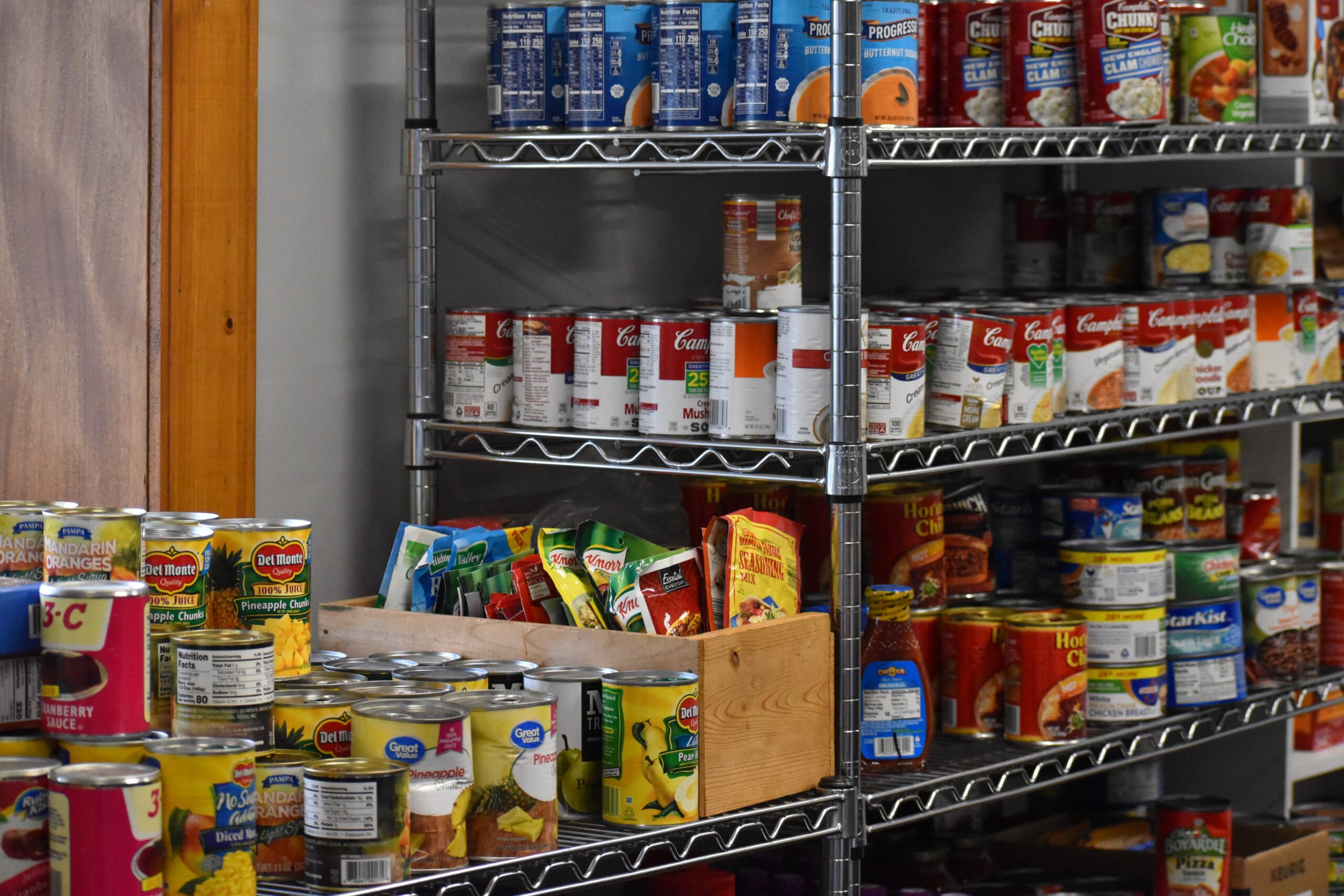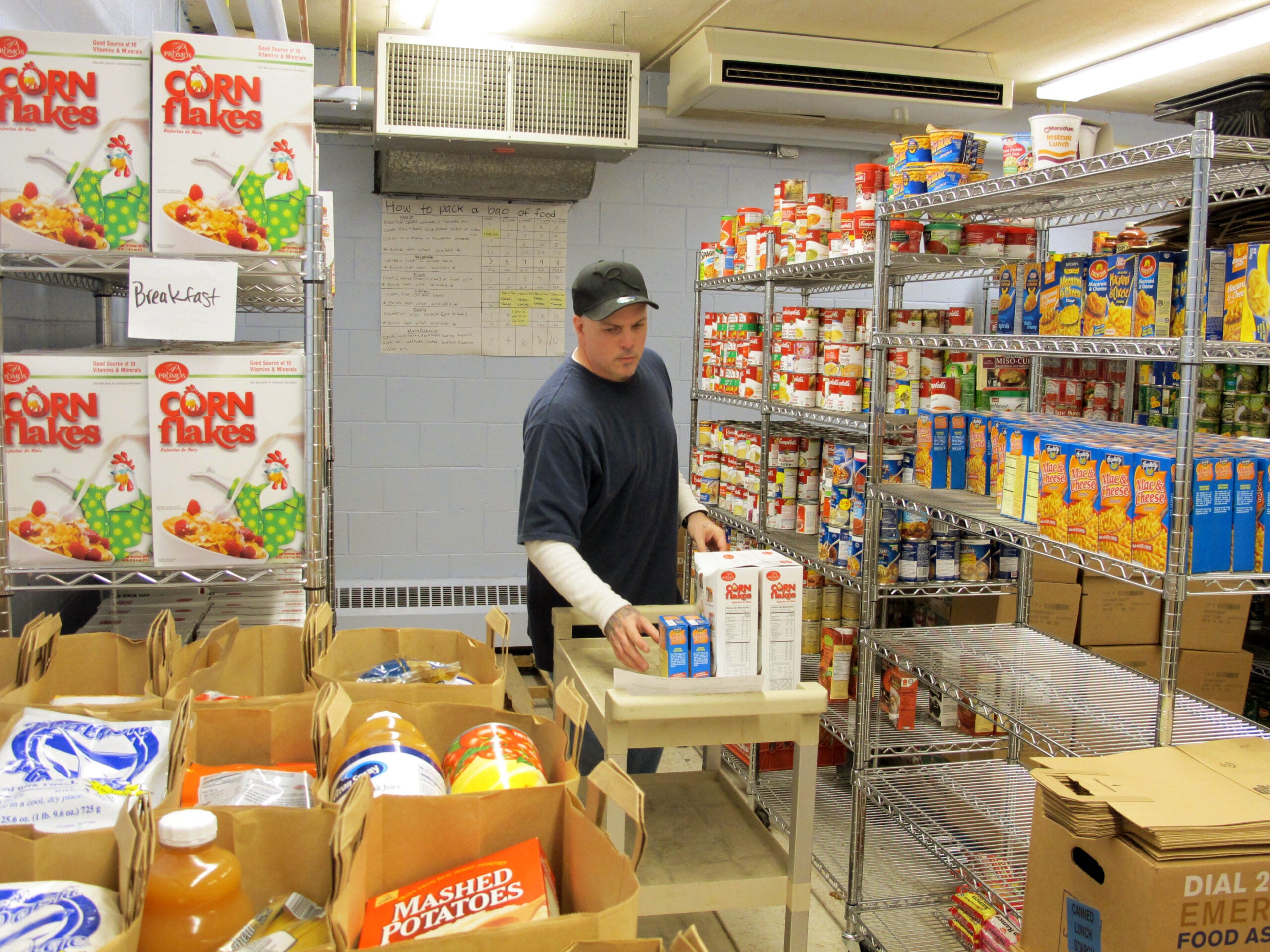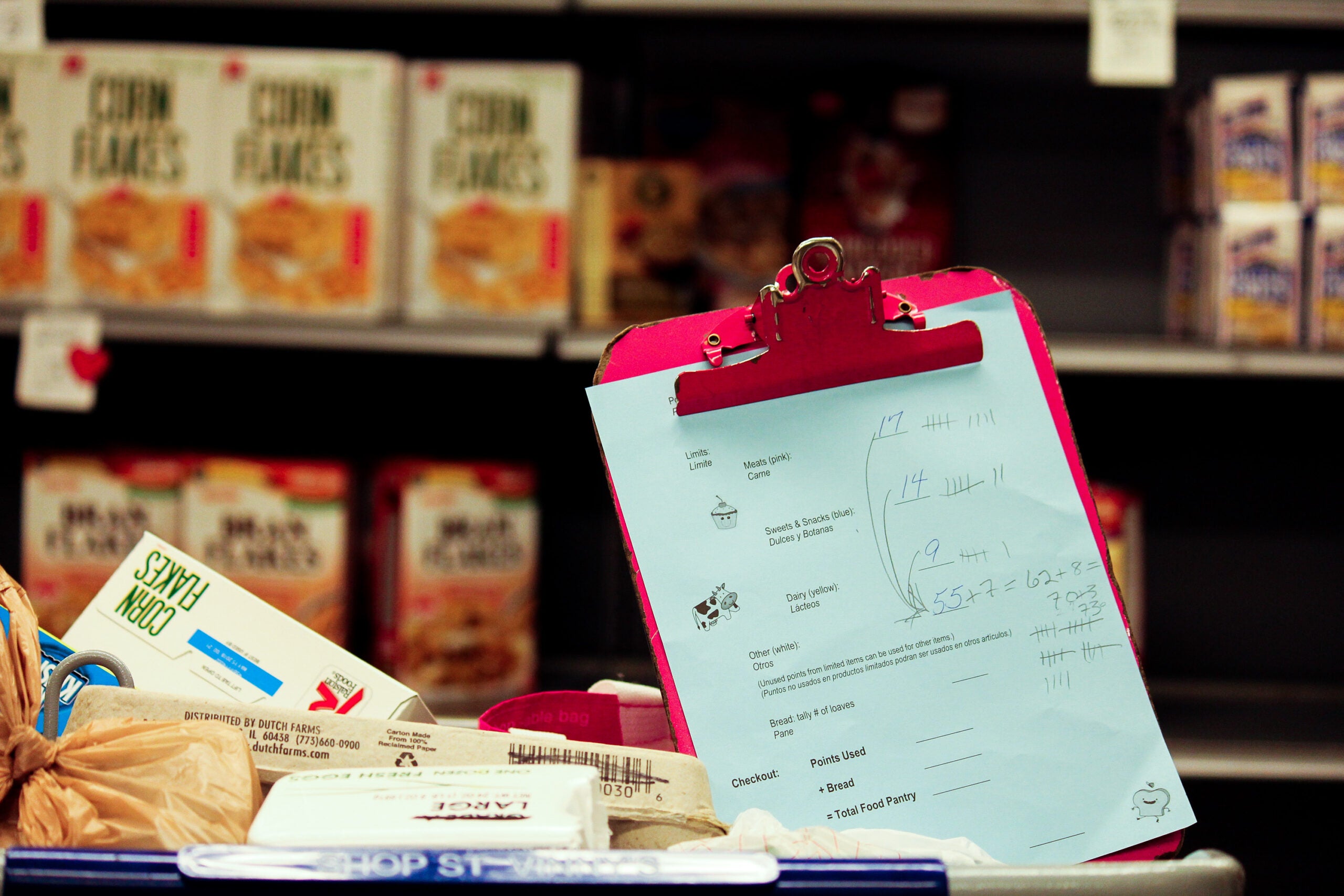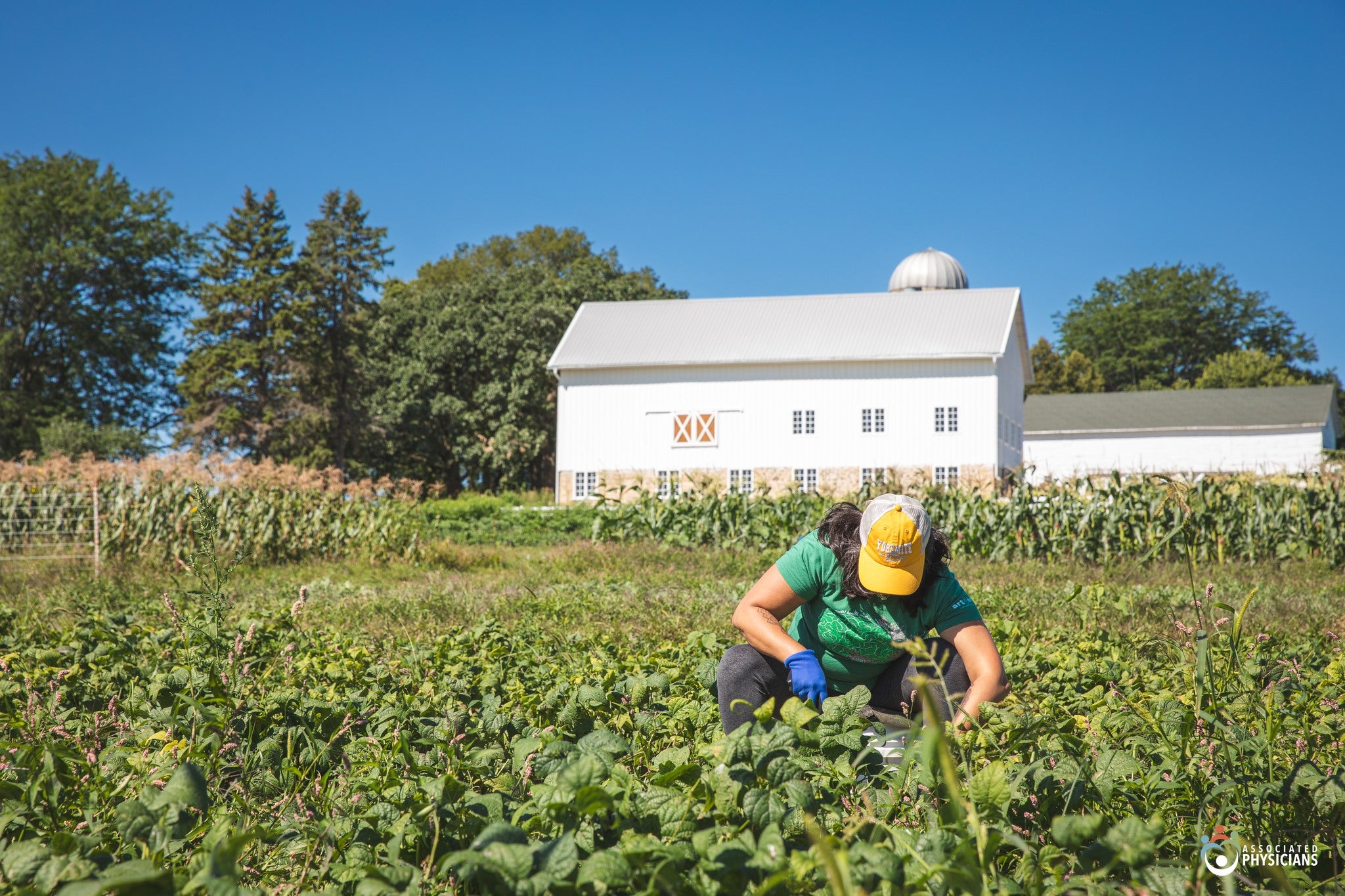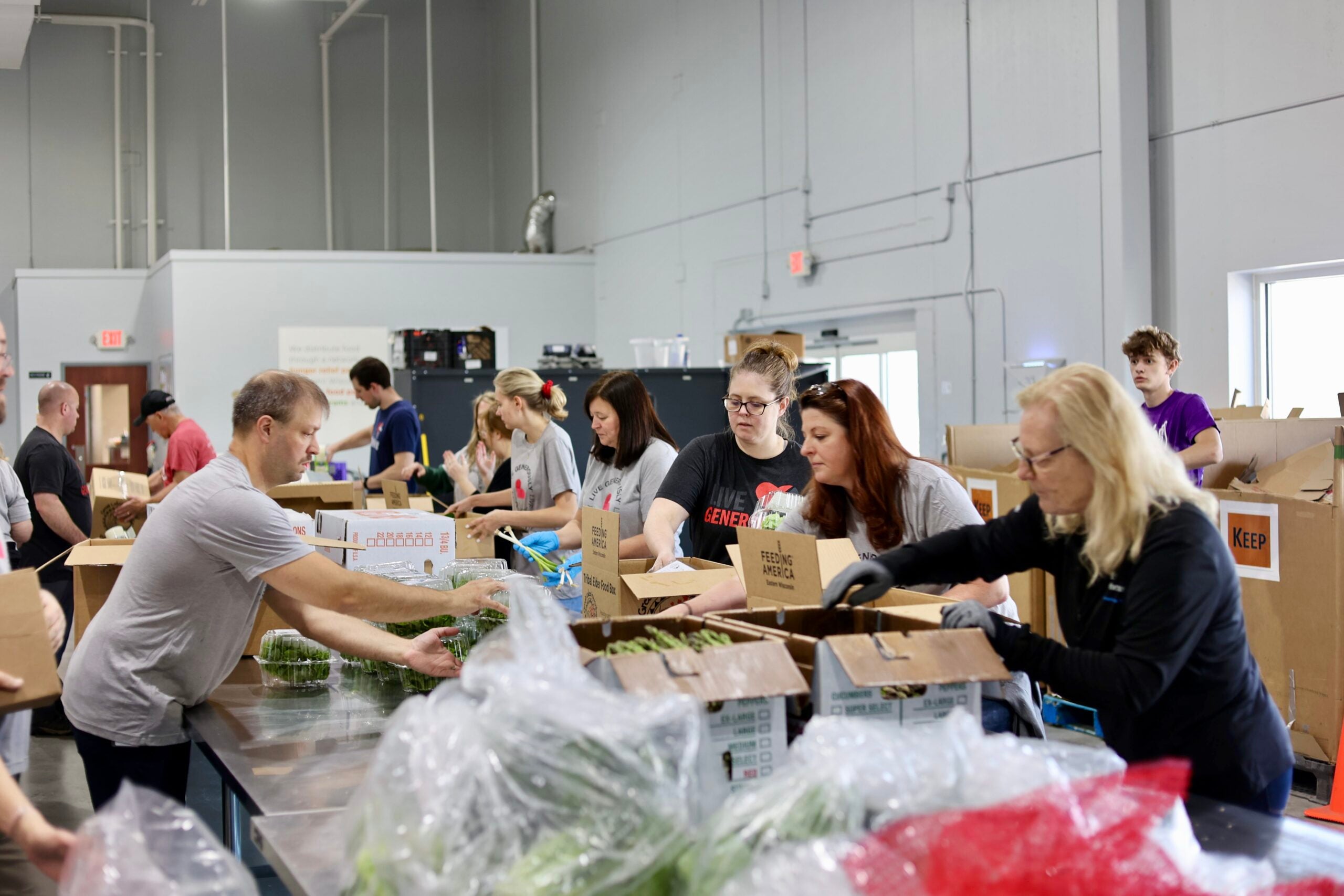Some Wisconsin food pantries are experiencing a growing demand for their services year over year, despite the state’s rising wages and low unemployment rate.
Friends With Food, a food bank in Waukesha, is seeing their lines get longer, with a growing proportion of children in need.
Founder and executive director Rochelle Gamauf told WPR’s “Wisconsin Today” that the nonprofit is serving more families who are visiting a food pantry for the first time in their lives.
News with a little more humanity
WPR’s “Wisconsin Today” newsletter keeps you connected to the state you love without feeling overwhelmed. No paywall. No agenda. No corporate filter.
“They were very reluctant to come into our doors, just because they were down to the last food in their cupboards, and they were trying to use every other resource possible before they walked into a food pantry,” Gamauf said. “You could just tell that they were feeling defeated.”
According to census data, Waukesha County has some of the wealthiest communities in the state. But Gamauf said that doesn’t prevent the need for food on the other end of the economic spectrum.
Up in the Northwoods of Wisconsin, Lakeland Pantry is facing similar trends. It serves over 6,300 square miles across Oneida and Vilas Counties.
Debbie Holzkamp volunteers as a grant writer with the organization. She told “Wisconsin Today” the group serves a higher proportion of older residents, and the disparate nature of their communities creates additional challenges.
“It makes it difficult for clients with limited transportation or just can’t afford the cost of transportation,” Holzkamp said. “We also struggle with a third of that population, 50 and older, being disabled.”
The increasing need for food means an increasing need of funding for food banks to keep up with the demand.
The majority comes at the local level from surrounding communities, despite Holzkamp’s best efforts writing grants.
“Most of our funding comes from local donations, sponsors and a strong collaboration with local schools and churches,” Holzkamp said. “We have very little direct government support.”
The upcoming holiday season will spur food drives and other charitable giving that supports non-profits around Wisconsin.
But Rochelle Gamauf from Waukesha’s Friends with Food said the rising need isn’t limited to the winter months.
“I would urge anyone to support local food pantries in Wisconsin, because we’ve had to rescue more food than we ever had,” Gamauf said. “We’re needing a lot more funding so that we can keep up with demand.”
Wisconsin Public Radio, © Copyright 2025, Board of Regents of the University of Wisconsin System and Wisconsin Educational Communications Board.

